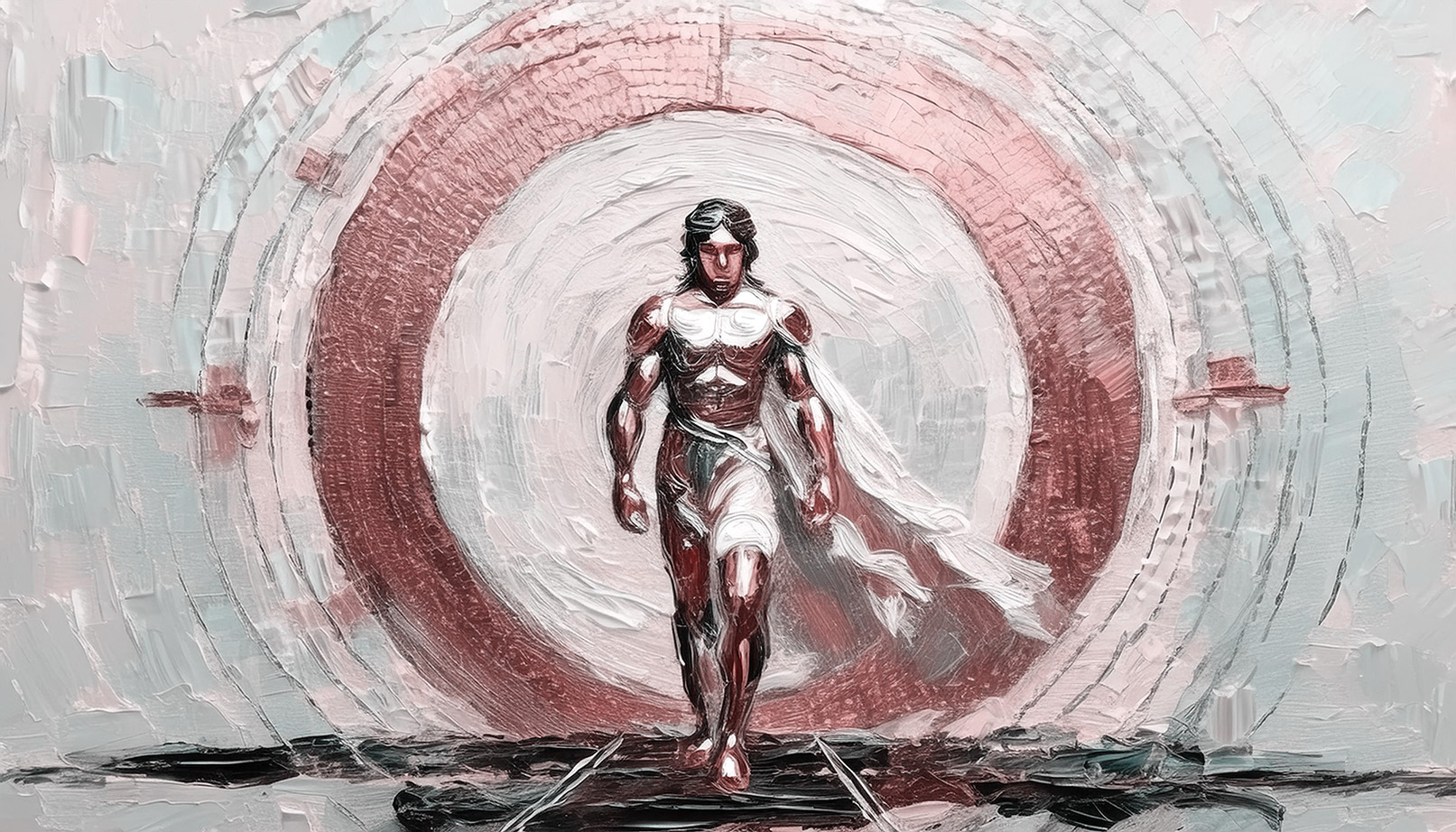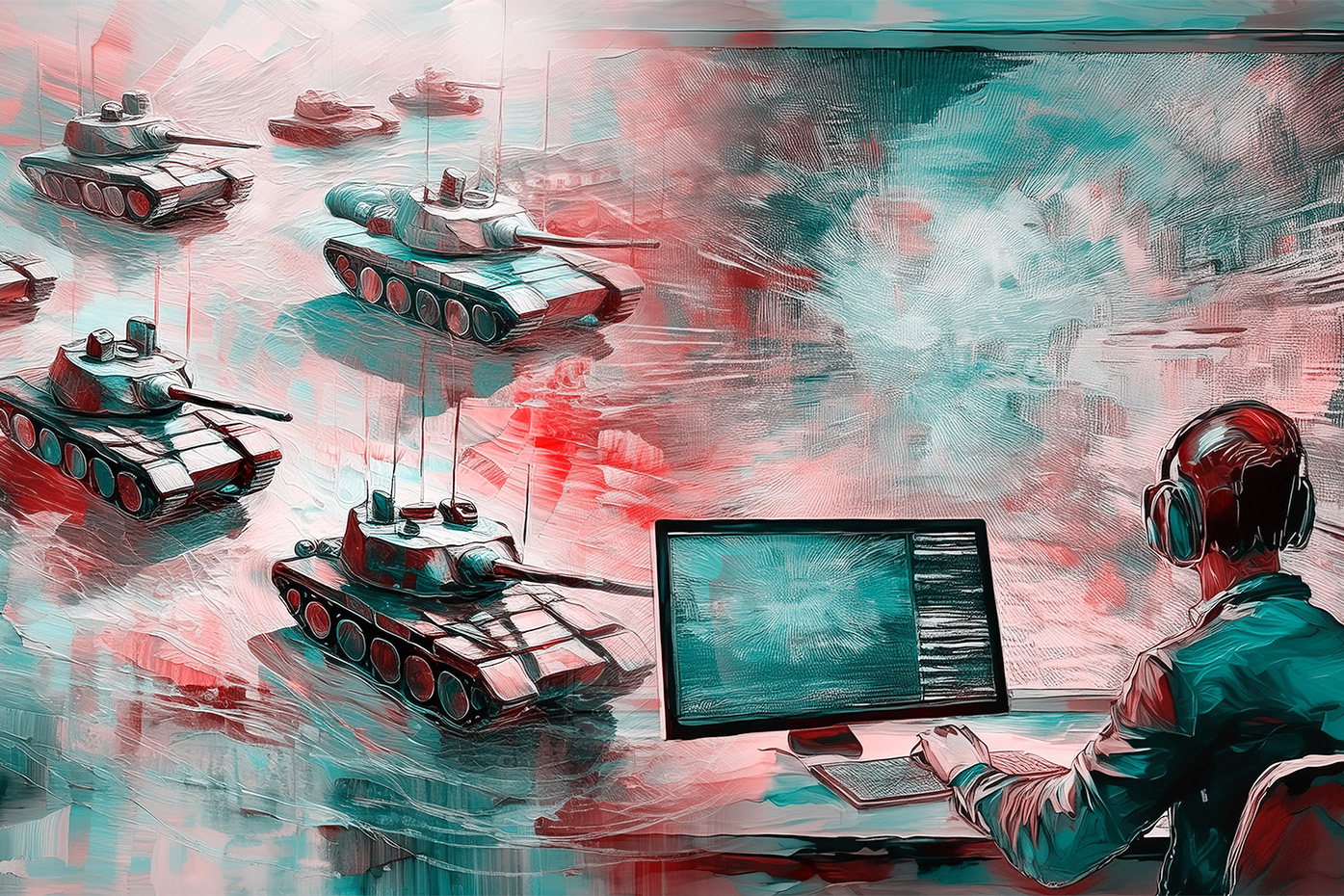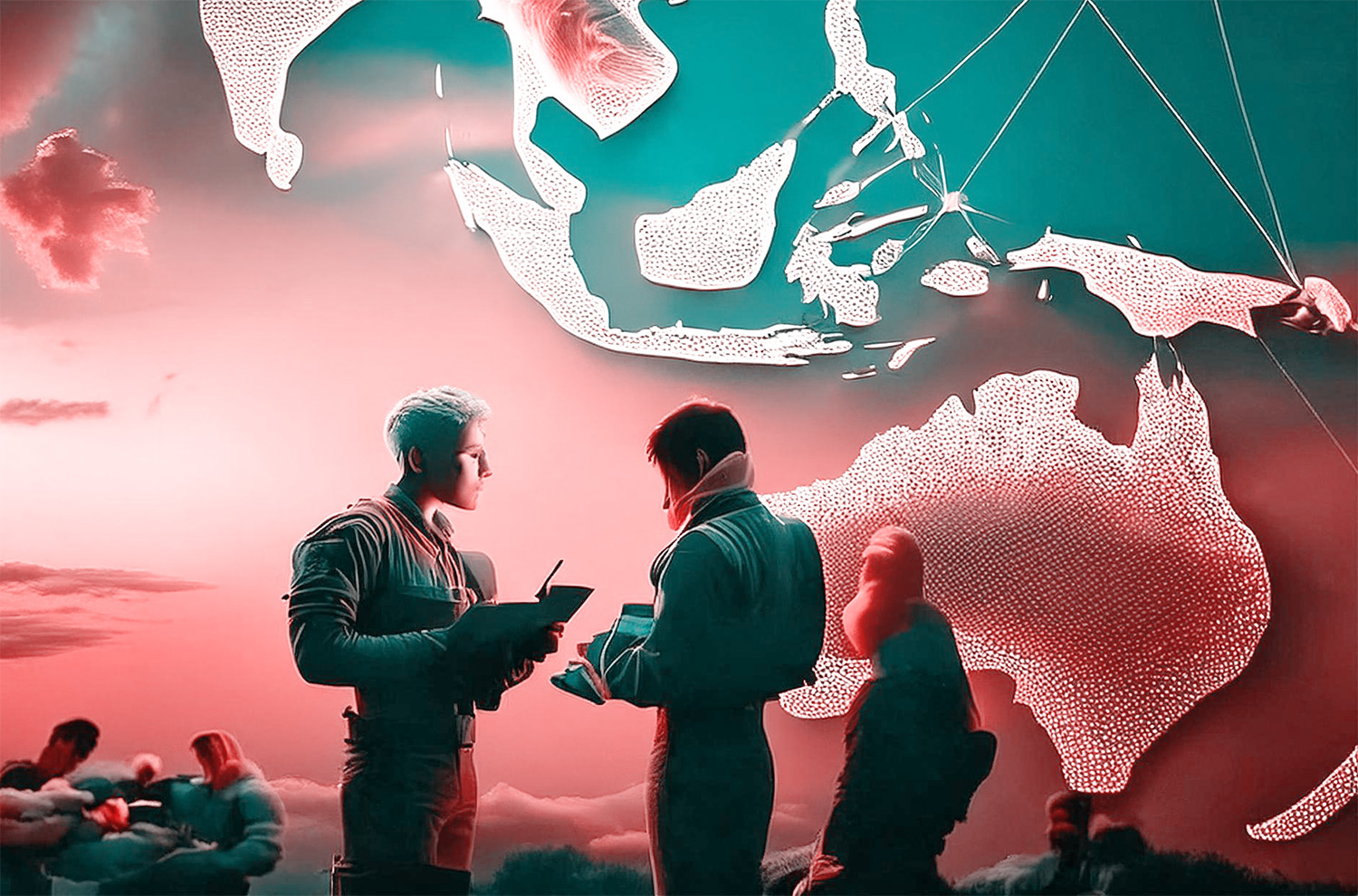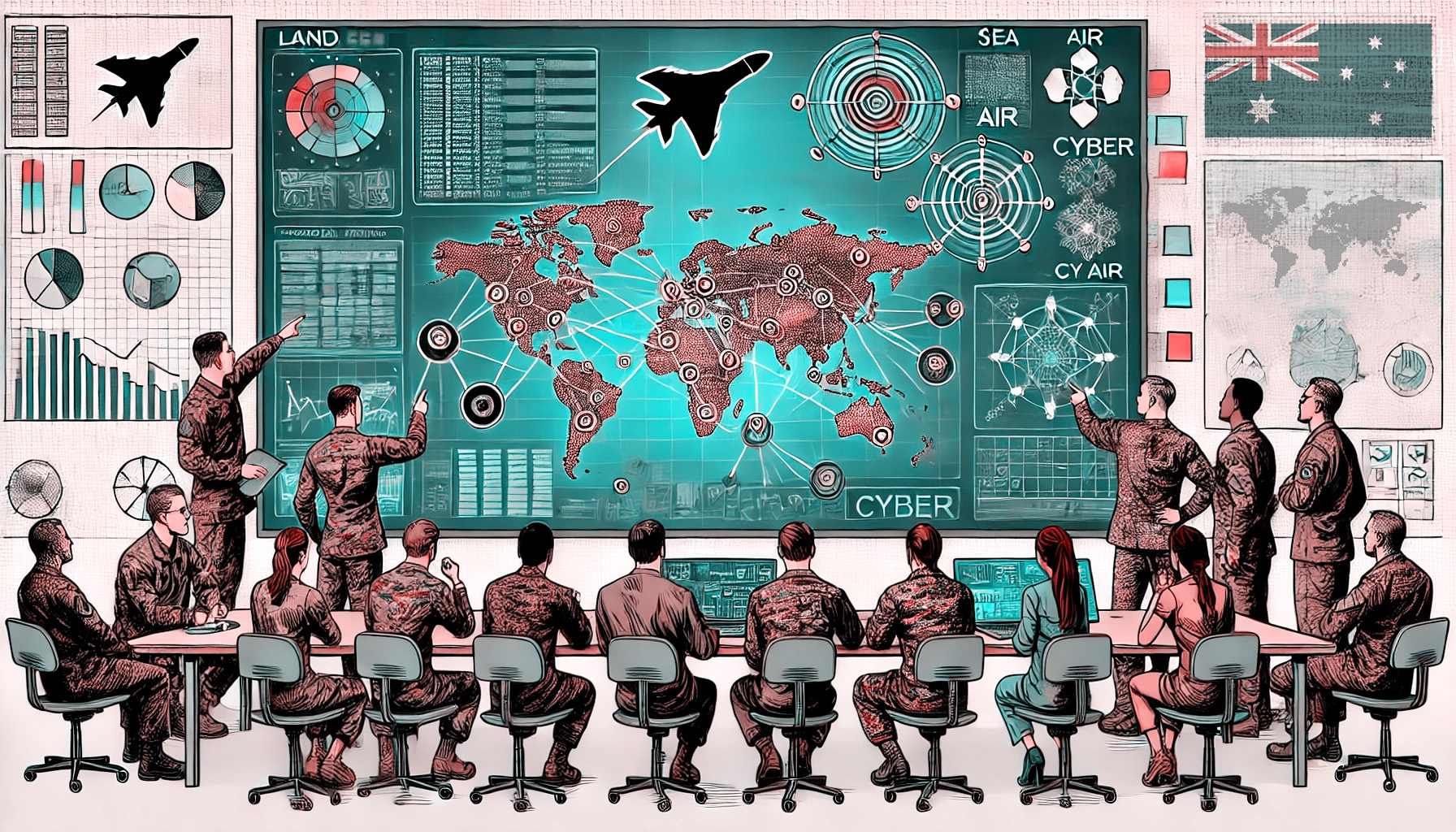Introduction
The Centre of Gravity (COG) is a core element of the Australian Joint Military Appreciation Process (JMAP) and aids directly in the overall aims of the process in developing and delivering robust operational plans. Proper consideration of COG application within the JMAP and its utility in understanding any actor’s purpose, resources, strengths and weaknesses throughout the process is critical in developing a suitable and effective plan.
This paper will analyse COG concepts as an element of the JMAP and how they are applied within the context of joint operational planning doctrine from an Australian perspective. Historically, Australian operational planning has occurred alongside or as part of that of the United Kingdom, United States of America, Canada, and New Zealand. This means that Australian planning doctrine and concepts are influenced by and contribute to the processes across this community. Consequently, while each nation’s application of joint planning is different, they draw upon the same pool of academic thought. This holds the benefit of creating cooperative versions of the doctrine and, notably, the COG construct. Due to this aligned view of COG, this paper will look to comparative COG concepts outside those currently used in the Australian JMAP. There are many views on how COGs should be derived and used within operational planning. However, understanding their use throughout the process and how JMAP can better embrace the cognitive advantages of COG constructs is essential to their effectiveness in planning.
This paper is broken into three sections to analyse the use of COG in the context of the Australian Planning Doctrine. Firstly, it will analyse the use of COG within the current Australian Planning Doctrine. This section will look at the structure of the COG within the Australian Doctrine, followed by an exploration of its outputs and applications throughout the broader planning process. From this Australian understanding of COG, the second part of the paper will then analyse COG from the perspective of Antulio Echevarria II, a leading thinker from within Australia’s operational ecosystem, on the use and meaning of COG.[1] This section will explore Echevarria’s ideas on COG and their relevance to existing Australian planning doctrine. Finally, based upon the analysis of the first two sections, this paper will explore how greater utility can be found in COG use in future operational situations, particularly in better aligning COG processes to modern operational pressures.
Centre of Gravity in Australian Joint Planning Doctrine
Australian planning doctrine holds several conflicts in how it seeks to apply COG. While seeing it as an important element in plan development, Australian planning doctrine also denigrates the usefulness of COG by limiting the thread of logic to discrete points within the planning process.[2] While these limitations are implemented to increase COG’s applicability across all types of operations, they erode the vital link between the analysis of each actor’s purpose, method, and end state to the plan's development at all stages. COG’s analytical outputs are essential in understanding its broader utility throughout the planning process. As such, this analytical output holds value in understanding not only an adversary’s intent and resources but also in applying a more objective lens to the analysis of one’s own force. This section will first analyse the description and process of COG provided by the core Australian doctrine on planning before then analysing its use and linkages throughout these documents.[3]
COG is a central element to understanding any actor within a given operational context. It facilitates an alignment of analysis and understanding of an actor with the desired end state of the commander and their planning team. In reflection of this linkage, the Australian Defence Force defines the Centre of Gravity as: ‘The primary entity that possesses the inherent capability to achieve an objective or the desired end state.’[4] Central to this definition is the entity and its ability to achieve the end state rather than a strict set of rules on what constitutes the COG and its elements. The capstone planning doctrine, ADF-P-5 Planning, describes several characteristics; notably, that COGs can be ‘Physical and non-physical … change over time … [and] can be different at strategic, operational and tactical levels’.[5] What these characteristics demonstrate is the flexible nature of COGs in doctrine. This flexibility allows for the adaptation of the concept at all levels of war and specific operational purposes. Consequently, COGs, at least at this high level of doctrinal application, allow for a conceptual and agile interpretation of an actor's capability and intent in a given situation, linking resources, purpose and end state.
Given the link between intent, resources, and end state, the general application of these ideas allows for the analysis of an actor to understand their motivations and objectives. Importantly, this connection begins to identify the elements that collectively enable the actor to achieve their end state and prioritise these efforts accordingly. Australian doctrine recognises these links in the Intelligence Preparation of the Operating Environment process and the analysis of the planner’s own force.[6] What this begins to develop is a stovepiped approach to analysis. Actors within a specific scenario will interact, and particularly where they are adversaries, their decisions will alter the COG construct of other actors. The separate development of these COGs, as suggested in the JMAP, allows for efficiency but reduces this interactive analysis to a static artifact at the early planning stages. While the JMAP doctrine identifies the intelligence development of adversary COGs, it does not bring it into the context of the planner’s analysis of their own force beyond a conceptual exploration of deriving COGs.[7] The framing of COG in this manner as part of its own force analysis and with only a cursory reference to intelligence processes decouples the two applications of COG. While a separate Joint Intelligence doctrine exists and details COG in that context, its absence within JMAP and planning doctrine in a detailed and linked manner illustrates this separation.[8]
COG’s ambiguity is apparent in these preceding points, which is problematic, particularly in application-level doctrine, such as in the ADFP 5.0.1 Joint Military Appreciation Process. The ADF JMAP doctrine applies the Strange and Iron model of centre-of-gravity analysis to address this issue.[9] Professor Strange and Colonel Iron, as pre-eminent COG theorists, provide an expert view on COG constructs validated by a number of examples throughout the latter part of the 21st century.[10] This model of COG analysis is based on a marriage of historical examples and operational planning considerations.[11] Therefore, the resulting analysis model is familiar to military planners and provides a robust model for planning across multiple operational levels. The core of this model is a hierarchical construct to break down an assessed COG and evaluate its components logically. It defines the hierarchy of these elements from highest to lowest as the COG, Critical Capabilities (CC), Critical Requirements (CR), and Critical Vulnerabilities (CV).[12] CCs are the elements of an adversary that enable the COG to achieve its aim, while CRs ‘are the crucial enablers, means and resources’ that enable the CC to perform its role.[13] CVs, in turn, are those CRs that can be targeted or influenced by another actor, and importantly, if degraded, will deny the function of CCs and, thus, the COG. This process is distinctly linear. Consequently, the Strange and Iron COG process relies on the knowledge and experience of the planning group to impart agility to the process. Where this does not happen, the COG cannot be effectively applied to complex and changing situations, especially where the interactions of a number of actors are crucial. Importantly, agility allows planners to combine joint plans, marrying the domain and specialist planning outputs alongside coalition versions of JMAP to create a sound and actionable plan in a complex environment.[14]
These observations of COG within ADF doctrine are not exhaustive but show the tension between a conceptual framework to understand complex problems and a templated model for its application. COG, in its Clausewitzian origins, reflects variation between its tactical and strategic applications; this indicates its wide-ranging utility in understanding and processing a given military problem.[15] Where the ADF doctrine falls down is in its ability to deal with this complexity across a range of actors while still providing a template to understand and apply the concept at all levels of proficiency and experience. To have a model applicable at all levels of understanding and relevant to each level of war is impractical. Instead, the current doctrine seeks a simpler, more widely applicable version of COG. This relies upon the practitioner’s knowledge to enable a more agile approach and progress beyond a linear application presented in the ADF JMAP interpretation of Strange and Iron’s model.
Echevarria’s Concept of Centre of Gravity
Antulio Echevarria II, a former US military officer, historian, and active COG theorist, describes the COG as a focal point rather than a concentration or coordination of power.[16] When Echevarria’s definition is considered against the Strange and Iron interpretation in the ADF Doctrine, it broadens the understanding of what a COG is and how it could apply. Echevarria further identifies several competing COG interpretations across the United States Department of Defense branches. He contends that the difference is less important than the unifying concept behind them all.[17] In other words, the method of deriving the COG matters less than the planner’s understanding of COG and a unified definition. Echevarria lays out a case for COG being a framework for understanding how these different perspectives and requirements in operational planning can articulate their methods of influence on a central COG.
Echevarria sees the COG concept as deviating from Clausewitz’s original text over time.[18] This change in meaning has resulted in misinterpretations of the original COG concept and, therefore, its misapplication in a contemporary sense. The original intent of Clausewitz’s COG, according to Echevarria, is about finding the point of balance in an adversary: the point at which sources of strength are in equilibrium and, therefore, the point around which a force draws its cohesion and its ability to apply power.[19] While significantly more nuanced, Echevarria’s view of COG, as articulated here, means that conceptually the COG is constantly in motion as sources of power or actions of an adversary change. Furthermore, moral or non-physical COGs are more likely to retain relevance through operations by better describing the core element of an adversary from which they derive the ability to fight throughout these changes. This is, therefore, a matter of judgement, making reductive and linear processes less relevant to the creation of COGs than meaningful strategic judgement by senior leaders to direct and focus their force.[20]
The critical difference between ADF doctrine and Echevarria’s view of COG is the change from an inherent strength or weakness to a balancing point or state of equilibrium.[21] Furthermore, he links the notion of equilibrium back to Clausewitz's ideas in his original text, speaking to physics concepts, specifically around force. In doing so, he makes the concept of the centre of gravity more ephemeral and, interestingly, one that moves as soon as the condition of the various forces supporting it changes.[22] In applying this through military planning, the centre of gravity must be continually appraised and included at all planning stages. Without understanding the interaction between parties and the impacts of their decisions and actions, the planner increases the risk of miscalculating the COG of an adversary over time.
A further implication of the COG's importance throughout the planning cycle is maintaining a focus on the desired end state of a given task. By consistently focusing on the desired end state, greater clarity and unity of purpose will be achieved throughout the planning process. In Echevarria’s view of COG, this comes in a few different forms. Firstly, the planner must understand the actors at hand in terms of unity and interdependence, as this will drive the number and effectiveness of COGs used.[23] By understanding how parts of an actor function within the wider system or where they operate independently, greater accuracy can be achieved in a COG. Furthermore, as the planner seeks to revise the COG throughout planning, they are better placed to understand the impacts of their actions and design for battle at any given point.
Where COGs are envisaged as a focal point, the COG controls and directs the supporting elements or CRs. Rather than inherently owning the CRs, Echevarria offers that a COG as a focal point will ‘draw energy and resources to themselves, and then redirect them elsewhere’.[24] This assertion implies a less physical version of COG, one reflective of will or purpose and, therefore, more closely linked to the end state desired by that actor. While a COG could still be physical, its suitability at higher levels of command is diminished. It is instead about how resources are coordinated and massed, particularly understanding the intent behind that process. For a joint consideration of COG, this seems more appropriate than other more linear or rigid analyses. This is because it allows for the specific domain interpretations, constraints, and models to be aligned through the explicit intent of the plan. More specifically, through this approach Echevarria’s COG clearly aligns purpose, method, and end state, thus providing a more precise alignment of initial actor assessments throughout the planning process.
The final element of Echevarria’s COG theory to explore in this paper is his argument that COG processes inherently aim to remove the ability of an adversary to defend themselves.[25] This is due to the military nature of the COG concept; it is designed to defeat an adversary, not necessarily to achieve a more nuanced and strategic outcome. Echevarria also further highlights, however, that the purpose of using COGs in planning is to ‘assist practitioners to focus their efforts and resources’.[26] This second part of this statement is important to how Echevarria’s ideas can enhance COG’s use within Australian Doctrine. Here, Echevarria’s point emphasises the utility of COG outputs throughout the planning process. By understanding how the COG is created and the links between its components, the planner is better equipped to generate a plan that can synchronise effects against CVs in a way that deliberately affects the supporting flows of resources and effort toward the focal point or COG, thereby generating planning efficiency in terms of both process and available resources.
By developing an approach to COG that is more focused on interactions and supporting relationships within a COG, a greater understanding of the nuance in interactions can be created. This is critical in a modern security paradigm, where the speed and ubiquity of military systems, particularly those supporting decisionmaking, will directly affect the rate of change in any given actor’s COG. Consequently, the effects of cyberspace and space—particularly their interactions with and across any military operation's land, sea, and air components—are best considered in a framework such as Echevarria's. This allows a more detailed approach to the specific analytical tools of domains, capabilities, and other agencies. Critically, this understanding within the context of joint doctrine is important to maintain a clear focus on mission objectives while allowing the planning and executing teams to align their effects in a nuanced and evolving manner.
Augmenting the ADF’s concept of the Centre of Gravity
Through the comparison of the ideas of Echevarria and the current Australian joint planning doctrine, a demonstration of the inherent strengths of each approach is created. To gain the best outcome from joint planning, a system needs to be employed that allows for the strengths of each COG model to be reinforced while covering for their weaknesses. Furthermore, planning always occurs under pressure. Resources of time and mental capacity need to be intuitively aligned to the purpose of the task. The ability to support this variety of thought while creating a framework for planners with different experience levels is missing in the current ADF joint doctrine.
The complexity of the planning problem set should drive the COG framework used. The adherence to Strange and Iron’s model is constraining in the current ADF doctrine. While effective in traditional military applications and warfare, its linear, deductive process does not adequately address situations of greater complexity[27]. Examples of this increased complexity can be seen in the growth of warfare in emerging domains and the conduct of grey zone operations outside traditional definitions of war and peace.[28] The comparison of ADF COG concepts to those of Echevarria demonstrates that variety offers a greater opportunity to have a suitable model for a given problem set faced by a planning group. Linear models provide a good solution to traditional or tactical problems and should be applied in those situations. Where greater complexity exists, or the COG is not physical, a model such as Echevarria’s is likely suitable.
In aligning operations at all levels of war, from tactical to strategic, having a range of models is also beneficial. Differences in approach, linearity, and complexity mean that some models more closely suit a tactical, operational, or strategic problem.[29] The challenge to ADF doctrine is how to best encompass this range of situations. It is not feasible to hold a large number of models as exemplars in doctrine; however, a more nuanced discussion of the strengths and weaknesses of different approaches and how their processes work would add intellectual depth to the current doctrinal explanation of COG. Beyond the levels of war, greater rigour in explaining COGs would also develop the practitioners' understanding of COG application throughout the planning process.
By developing a set of COG models to suit a range of applications, better use of planners’ capacity and skills is possible. One such example is the difference between inductive and deductive analysis. Different models of COG analysis are generally one or the other, with computers holding an advantage in the conduct of deductive reasoning.[30] Herein lies an opportunity for leveraging emerging technologies, such as the latest iterations of Artificial Intelligence and Machine Learning. These technologies can build and produce COG analysis in more physical and deductive scenarios or reassess repeatable analysis processes.[31] Furthermore, structures to bring together COG concepts at the strategic and operational levels within the capstone ADF planning doctrine will better enable agile and intuitive human-machine teaming in the analysis of information, the understanding of situations, and the speed of decision making.[32] Doctrine must reflect this approach for it to be readily enabled, as the alignment of different models aids in more effective planning and in introducing new capabilities to the overall planning process.
Finally, Echevarria’s emphasis on how COGs move due to their interactions with CRs is a vital element of COG analysis that must be deliberately integrated into all JMAP elements. While the doctrine indicates the importance of COG at all stages, it does not adequately link each step to revisiting the COG, or indeed intuitively doing it as part of the process writ large. COG will change not only as an actor makes decisions but also as a consequence of the commander’s decisions and actions within a plan.[33] If Australian planning doctrine does not adequately address the agility of COGs throughout the planning process, then practitioners will inherently fail to get the most out of COG analysis. COGs will instead be constrained to a tool for the initial sketching of an actor and not a genuine analysis of intent and capability alongside their purpose, method and end state.
Conclusion
A wide range of COG interpretations exist, all attempting to interpret a 19th-century concept and apply it to a range of scenarios, capabilities, and types of inter-state competition unimaginable to Clausewitz. Despite that, the initial concepts put forward by Clausewitz offer an uncluttered view of the character and nature of war and, importantly, how to understand and fight it. Echevarria attempts to return to this version of COGs and, in doing so, offers a sound counterpoint to the Australian JMAP’s doctrinal and templated version of COG analysis.
Australian Planning Doctrine has proven effective across a wide range of operations, including how it describes and applies the COG. However, the effectiveness of this initial benchmark can be developed to better integrate the wide range of capabilities, expertise, and perspectives present in the complexities of modern military operations. Without the ability to understand the actors whom the planner seeks to affect and the nuance of how this will alter that actor’s COG, military operations will be constrained in their ability to integrate joint, coalition and interdepartmental efforts in a meaningful way. Agility of thought and the opportunity to engage new methods of analysis better suited to the speed and complexity of operations should be sought in Australian planning doctrine. Echevarria offers one of these and, as a point of comparison, demonstrates the breadth of ideas and opportunities that could be developed by expanding the reference point for the Australian Doctrinal understanding of COGs.
Australian Defence Force. ADF-I-2 Intelligence. 1st ed. Canberra, Australia: Directorate of Information, Graphics and eResources, 2023.
———. ADFP 5.0.1 Joint Military Appreciation Process. 2 AL3. Canberra, Australia: Directorate Publishing, Library and Information Services, 2019.
———. ADF-P-2 Planning. 1st ed. Canberra, Australia: Directorate of Information, Graphics and eResources, 2021.
Barfoed, Jacob. ‘The COG Strikes Back: Why a 200 Year Old Analogy Still Has a Central Place in the Theory and Practice of Strategy’. Baltic Security & Defence Review 17, no. 2 (July 2014): 5–33.
Demir, Mustafa, Mustafa Canan, and Myke C. Cohen. ‘Modeling Team Interaction and Decision-Making in Agile Human–Machine Teams: Quantum and Dynamical Systems Perspective’. IEEE Transactions on Human-Machine Systems 53, no. 4 (August 2023): 720–30. https://doi.org/10.1109/THMS.2023.3276744
Echevarria II, Antulio J. ‘Center of Gravity: Recommendations for Joint Doctrine’. Joint Force Quarterly, no. 35 (22 June 2003): 10–18.
———. Clausewitz and Contemporary War. 1st ed. Oxford: Oxford University Press, 2007. https://academic.oup.com/book/9467
———. ‘“Reining in” the Center of Gravity Concept’. Air & Space Power Journal 17, no. 2 (Summer 2003): 87.
Evans, Michael. ‘Centre of Gravity Analysis in Joint Military Planning and Design: Implications and Recommendations for the Australian Defence Force’. Security Challenges 8, no. 2 (2012): 81–106.
Falzon, Lucia. ‘Using Bayesian Network Analysis to Support Centre of Gravity Analysis in Military Planning’. European Journal of Operational Research 170, no. 2 (April 2006): 629–43. https://doi.org/10.1016/j.ejor.2004.06.028
Kornatz, Steven D. ‘The Primacy of COG in Planning’. JFQ: Joint Force Quarterly, no. 82 (Quarter 2016): 91–97.
Meyer, Eystein L. ‘The Centre of Gravity Concept: Contemporary Theories, Comparison, and Implications’. Defence Studies 22, no. 3 (3 July 2022): 327–53. https://doi.org/10.1080/14702436.2022.2030715
Paterson, Thomas, and Lauren Hanley. ‘Political Warfare in the Digital Age: Cyber Subversion, Information Operations and “Deep Fakes”’. Australian Journal of International Affairs 74, no. 4 (August 2020): 439–54. https://doi.org/10.1080/10357718.2020.1734772
Payne, Kenneth. Strategy, Evolution, and War: From Apes to Artificial Intelligence. Washington, DC: Georgetown University Press, 2018.
1 Eystein L. Meyer, ‘The Centre of Gravity Concept: Contemporary Theories, Comparison, and Implications’, Defence Studies 22, no. 3 (3 July 2022): 330, https://doi.org/10.1080/14702436.2022.2030715.
2 Australian Defence Force, ADFP 5.0.1 Joint Military Appreciation Process, 2 AL3 (Canberra, Australia: Directorate Publishing, Library and Information Services, 2019), iv.
3 Australian Defence Force, ADFP 5.0.1 Joint Military Appreciation Process; Australian Defence Force, ADF-P-2 Planning, 1st ed. (Canberra, Australia: Directorate of Information, Graphics and eResources, 2021).
4 Australian Defence Force, ADFP 5.0.1 Joint Military Appreciation Process, 3–6; Australian Defence Force, ADF-P-2 Planning, 25.
5 Australian Defence Force, ADF-P-2 Planning, 26–27.
6 Australian Defence Force, 25.
7 Australian Defence Force, ADFP 5.0.1 Joint Military Appreciation Process, 3–6.
8 Australian Defence Force, ADF-I-2 Intelligence, 1st ed. (Canberra, Australia: Directorate of Information, Graphics and eResources, 2023), 93–94.
9 Australian Defence Force, ADFP 5.0.1 Joint Military Appreciation Process, 3–8 & 3–10.
10 Meyer, ‘The Centre of Gravity Concept’, 332.
11 Meyer, 332.
12 Australian Defence Force, ADFP 5.0.1 Joint Military Appreciation Process, 3–10.
13 Australian Defence Force, 3–10.
14 Steven D. Kornatz, ‘The Primacy of COG in Planning’, JFQ: Joint Force Quarterly, no. 82 (Quarter 2016): 93.
15 Jacob Barfoed, ‘The COG Strikes Back: Why a 200 Year Old Analogy Still Has a Central Place in the Theory and Practice of Strategy’, Baltic Security & Defence Review 17, no. 2 (July 2014): 8.
16 Antulio J. Echevarria II, Clausewitz and Contemporary War, 1st ed. (Oxford: Oxford University Press, 2007), 185, https://academic.oup.com/book/9467
17 Antulio J. Echevarria II, ‘“Reining in” the Center of Gravity Concept’, Air & Space Power Journal 17, no. 2 (Summer 2003): 88.
18 Antulio J. Echevarria II, ‘Center of Gravity: Recommendations for Joint Doctrine’, Joint Force Quarterly, no. 35 (22 June 2003): 13.
19 Echevarria II, 13–14.
20 Echevarria II, ‘“Reining in” the Center of Gravity Concept’, 91.
21 Echevarria II, 89.
22 Echevarria II, Clausewitz and Contemporary War, 180.
23 Echevarria II, 183–84.
24 Echevarria II, 182.
25 Echevarria II, 185.
26 Echevarria II, 185.
27 Meyer, ‘The Centre of Gravity Concept’, 333.
28 Thomas Paterson and Lauren Hanley, ‘Political Warfare in the Digital Age: Cyber Subversion, Information Operations and “Deep Fakes”’, Australian Journal of International Affairs 74, no. 4 (August 2020): 442, https://doi.org/10.1080/10357718.2020.1734772; Michael Evans, ‘Centre of Gravity Analysis in Joint Military Planning and Design: Implications and Recommendations for the Australian Defence Force’, Security Challenges 8, no. 2 (2012): 99.
29 Meyer, ‘The Centre of Gravity Concept’, 347–49.
30 Meyer, 330.
31 Lucia Falzon, ‘Using Bayesian Network Analysis to Support Centre of Gravity Analysis in Military Planning’, European Journal of Operational Research 170, no. 2 (April 2006): 629–30, https://doi.org/10.1016/j.ejor.2004.06.028
32 Mustafa Demir, Mustafa Canan, and Myke C. Cohen, ‘Modeling Team Interaction and Decision-Making in Agile Human–Machine Teams: Quantum and Dynamical Systems Perspective’, IEEE Transactions on Human-Machine Systems 53, no. 4 (August 2023): 721–22 ,https://doi.org/10.1109/THMS.2023.3276744; Kenneth Payne, Strategy, Evolution, and War: From Apes to Artificial Intelligence (Washington, DC: Georgetown University Press, 2018), 209.
33 Echevarria II, Clausewitz and Contemporary War, 180.









Comments
Start the conversation by sharing your thoughts! Please login to comment. If you don't yet have an account registration is quick and easy.